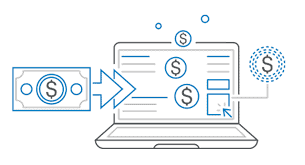Hi and welcome to my advanced paid traffic strategies blog post! While it’s amazing to see the success of online businesses rising, this road to success is getting rockier and tougher to convenience people to buy any product when each industry’s race becomes tougher.
To help you adapt to these changes and drive more sales and traffic towards your business, we will talk today about the advanced strategies of paid traffic. In this section, we will discuss a completely new way of targeting people, advanced formats of ads, and how to use the power of the crowd to generate leads with a laser-sharped focus.
At the end of this post, you would have covered all you need to know about basic and advanced paid traffic strategies, learn new effective strategies to boost traffic and leads, and enhance your conversion rate in no time. It doesn’t matter if you are a beginner who is ready to accelerate to the advanced level or a marketer going through a performance crisis while chasing the highest deals with the top online hubs. We will cover everything and look forward to having you on this amazing journey.
Let’s read on and unlock advanced paid traffic!
Understanding Target Audience and Buyer Personas
If you want to get some advanced paying traffic tactics, you’d better understand your target audience and create buyer personas first. You can picture the target market for something like this; it is the particular group who is most likely to benefit from your product or service. The reason why I say it is most likely is because people in this group share the same commonality and features like demographics, interests, and behaviours. Your target audience understands your potential customers’ needs and eventually reaches out to these people. A good paid traffic practitioner would go one step further and develop buyer personas. Buyer persona is the marketing and sales process of understanding your potential customers motivations, pain points, and goals. For example, it’s common to create two or three website or campaign personalities to talk to different personas.

Leveraging Retargeting and Remarketing for Increased Conversions
Retargeting and remarketing based on visitors’ activities on your website, or just on their discovery of your brand and products, are tools that can do incredibly powerful things for your business’ conversion rates. Most of us recommend deploying a tracking pixel on your website to monitor visitors and relentlessly outbid other advertisers on their retargeted ad exposure.
This way, visitors who have already shown interest in your brand or products will be exposed to your carefully planned online ads as they traverse the web. When browsing the internet, you’ll stay top-of-mind and, if possible, remind them about the interest they had originally shown for your brand (considering they materialised interest sufficiently for you to prompt the ad exposure in the first place).
But it gets even better: remarketing is an even more powerful tool for fine-tuning your paid traffic campaigns. They work pretty much the same way, only that remarketing is based on those people who have already engaged with your email marketing campaigns, social media posts, or any other online effort. If some aborted the transaction at the final stage of checkout, maybe you could think of reclaiming them with a beautifully designed remarketing campaign that intends to remind them of their original interest in your brand.
Maximizing ROI with A/B Testing and Conversion Rate Optimization (CRO)
When it comes to paid traffic, one of the best things you can focus on to get better ROI is A/B testing and conversion rate optimisation, also known as CRO. Conversion rate optimisation used to be about creating or altering your website to improve user experience in such a way as to improve sales funnel conversions. A/B tests are really key to data-driven performance. However, CRO now encompasses this notion of A/B testing all aspects of your website to improve it. A/B testing is when you test two versions of a webpage or ad against each other to see which gets you a better response.
A/B testing is the key to CRO because it provides the data needed to enable you to make sound business decisions. As your paid advertising continues through the buyer’s journey, you should constantly test all aspects of it and then apply those lessons to further paid advertising ventures. By doing this, you ensure that you’re getting the most out of your resources so that no dollar is wasted. There’s a reason why A/B testing is used for things such as designing a logo, building an app, or even developing a medication.
Harnessing the Power of Native Advertising
Native advertising is today’s most powerful way to reach and engage with your ideal audience. With sophisticated ad placement strategies, you can create highly specific ads that are native to a platform’s content, so they appear more organic and less disruptive than a traditional ad. While social media ads, such as on Facebook, are certainly included in the umbrella of native advertising, things can get far more nuanced and creative.
You can blend native video content, such as recipe videos, editorial content, product placements, and more, into your web audience’s experience. Platforms like the New York Times, The Wall Street Journal, and NBC have all embraced that native is the future. According to Business Insider, The New York Times was a pioneer in native advertising, creating special interest sections for Pepsi, Walmart, and Verizon in 2013.
Native advertising is far more targeted and less obvious than traditional ads, but the benefits are that it feels more natural and less intrusive to readers. Predictive analytics and churn rate algorithms can be used to determine when your customers are most likely to go somewhere else for your products or services Native advertising can allow you to truly think creatively instead of shovelling products or services onto the masses.
Sophisticated paid traffic strategies and native ads can be leveraged to drive conversions and sales, not just awareness. If you have a target audience that’s already on a specific platform, you can give them what they’re there to receive with something that feels natural and looks like fun to them. Native advertising can be used to increase brand visibility, build trust, and drive real-world results.

Utilizing Influencer Marketing to Drive Paid Traffic
As part of the paid traffic strategy of a business, influencer marketing refers to using popular personalities on social media and their blogs to reach new target audiences and enhance the visibility of your brand. By using influencers from your niche who are visible to the kind of audience that you need, businesses can generate more clicks and leads for their site as compared to traditional paid advertising methods.
Additionally, collaboration with influencers also allows for creating more appealing content that people can connect with and resonate much better with the general audience. In all, influencer marketing, if strategised well and executed properly, can be a good way of driving paid traffic and growing the business.
Exploring New Platforms: Beyond Google Ads and Facebook Ads
I’m referring to the scene in the digital marketer’s landscape where Google Ads and Facebook Ads still dominate paid traffic like Goliaths over the past decades (define an epic giant beast with a specific industry.). However, people in the digital scene have been used to it for so long now that people are shut out of their comfort zone and stuck in their own world, which got so addicted to it.
But things have been changing and people need to be more than open-minded that stepping out of their comfort zone and exploring new platforms is not far from reach to reach new audiences, new ad formats and possibilities of getting traffic at a more economical rate. New beginnings for businesses always involve breaking out of a comfort zone and exploring new avenues. The new platforms these days include things like TikTok ads, Snapchat ads, LinkedIn ads, and even Amazon ads, among many other options that people may not have been too aware of. Staying on top of the game means being open-minded enough to explore things.
Integrating Video Advertising into Your Paid Traffic Strategy
Incorporating video advertising into your paid traffic strategy will help you: Target your audience with your paid traffic Drive more attention to your paid traffic campaign With the increasing popularity of video consumption, integrating video in the form of paid ads will help you stand out. Incorporating a video will make your ads dynamic and engaging to viewer’s eyes.
Viewers or users are more likely to be engaged in different products or services through video explanations, and this media format will more likely increase the possibility of your users remembering your brand after watching your paid ads. Video ads convert higher than any other traditional forms of advertising. For the same reach, your video ads will convert higher than ever before.
Paid advertising with video is one of the most valuable tools to help you make sales and grow your business. Watching your competitors crush their revenue targets? Now you know how they achieve better performance by using video in their paid traffic strategies. Where is your paid traffic strategy missing and your targets stuck? Including a video in your paid traffic strategy will help you with making your overall paid traffic strategy more comprehensive to target your audience and help you to drive more attention to your paid traffic campaign.
Developing a Multi-Funnel Approach for Maximum Results
If you have a multi-funnel approach, so you have more funnels to target people for the same product, regardless of the segment and point in the buying cycle your target customers are in, you will be able to convert more people. So, if you need to sell a specific offer, just make one funnel, send traffic, and then create a landing page with an offer and email sequences, and you are good to go. You can also use retargeting ads to target people who showed interest in your brand but didn’t convert yet.
But what if you wanted to create multiple offers, or there are micro-segments of your audience and you want to create different messaging and offers for each segment to increase your conversion rate? In that case, you might have to create multiple landing pages and multiple funnels. You will convert more people overall and increase your ROI when you diversify your funnels for different segments.
The combinations are many, such as pre-sell, mini-sales page type, low ticket, evergreen, high-ticket, continuity, affiliate offers, tripwire, shopping cart upsell pages, free post-sell offers, and more. There are also long funnels and short funnels; long funnels can be multiple pages long, and short funnels can have just two steps. Diversifying your funnels is an advanced strategy because it can dramatically increase the performance of any paid traffic campaign you are running and make them very profitable.
Amplifying Social Media Ads through Custom Audiences and Lookalike Audiences
We live in a world of social media advertising. To do it right, we need to show our ads to the right people. One paid traffic strategy that can boost our advertising effectiveness and reach the right target is by leveraging the power of custom audiences and lookalike audiences. Custom audiences narrow down our paid advertising efforts, while lookalike audiences expand it.
When we upload a list of our peers whom we believe have a similar taste or behaviour, as an example, to our ad accounts, we call social media a custom audience. Facebook, Instagram, and LinkedIn have powerful algorithms that thoughtfully scan their billions of users and find similar users to the provided list of users. This group of users is referred to as our lookalike audience.
By relying on custom or lookalike audiences, all social media advertising platforms will boost your advertising — they will show your ads more often to the people your ads are most relevant to. Online advertisers, whether they be marketers or business owners, often struggle to convert or find the right customers for their business. Custom audiences and lookalike audiences prove to be one of the most beneficial ways to ensure that the right people see your advertising. Used correctly, they can help you better understand your customers, grow your audience, and achieve a higher return on investment from your social ads.

The Role of Content Marketing in Paid Traffic Strategies
Content marketing is the unsung hero of every paid traffic strategy. Paid ads draw clicks to your website, but if the content you publish is valuable and on-target to what invented and brought them there, it will not only keep them on the site but more likely make them interested in your brand.
This is particularly true for retargeting campaigns, which are geared towards people who’ve already shown some interest in your products or services. The right kind of content will keep them nurtured on their way to clicking your brand once again and finalising a purchase.
The right kind of content will boost your chances of moving that site visitor in the direction of becoming a paying customer. It will also help you increase brand authority and trustworthiness, both of which will make your audiences more likely to interact with your ads.
It’s the thing that keeps the paid marketing engine running: content created for deeper customer interaction, which then instills trust in your service.
Measuring Success: Key Metrics and Analytics Tools
A pitfall that a lot of us have evaded is getting so caught up in the different advanced paid traffic strategies that we lack a reliable way to track our success and collect the right numbers. Our saviour is something we can refer to as key metrics and analytics. By tracking the right things, we can verify the success of our sales flow by looking at our performance in different ad networks based on data such as click-through rates, conversion rates, and cost per acquisition.
Finally, there are some amazing analytics tools that we can use, such as Google Analytics. Facebook Ads Manager. Various tools to perform A/B testing. We can use things like A/B testing, where we can essentially split a group of people viewing your campaigns into two groups: (1) a control group (regular campaigns) and (2) an optimization group (various tests run at the ad level on the changes we believe will lead to more conversions).
Conclusion
As the digital landscape evolves, keeping up with the latest paid traffic trends will prepare businesses for the future of generating paid traffic. One trend that many experts are sure won’t go away is using data and analytics to target and customize ad campaigns, reaching the right people with the right offers at just the right time. Tapping into more of our visual instincts, the proliferation of visual content (like pictures of plates of food) and video ads (from beauty products and selfies to YouTube clips encouraging us to consume even more screen time) has shown no signs of slowing and could present new opportunities for creating and scaling paid traffic.
Further advancements in artificial intelligence (AI) technology should facilitate more accurate paid traffic placements and bidding strategies, as well as automating optimization processes. It makes sense because the more effective these tactics get, the more ROI businesses can extract from their paid traffic. If you’re looking for more strategies to improve your paid traffic campaign, then get in touch with Amigo SEO today.
FAQs
Q: How can understanding buyer personas improve paid traffic results?
A: Creating detailed buyer personas helps in tailoring your marketing strategies to meet the specific needs, behaviors, and concerns of different segments of your audience, leading to higher engagement and conversion rates.
Q: What is the advantage of using retargeting in paid traffic strategies?
A: Retargeting allows you to re-engage visitors who have shown interest in your products but did not make a purchase. By targeting these potential customers with personalized ads, you can increase the likelihood of conversions.
Q: Why is A/B testing crucial in optimizing paid traffic campaigns?
A/B testing enables you to compare different versions of your ads or landing pages to determine which one performs better. This data-driven approach helps in refining your campaigns and boosting your overall marketing effectiveness.

